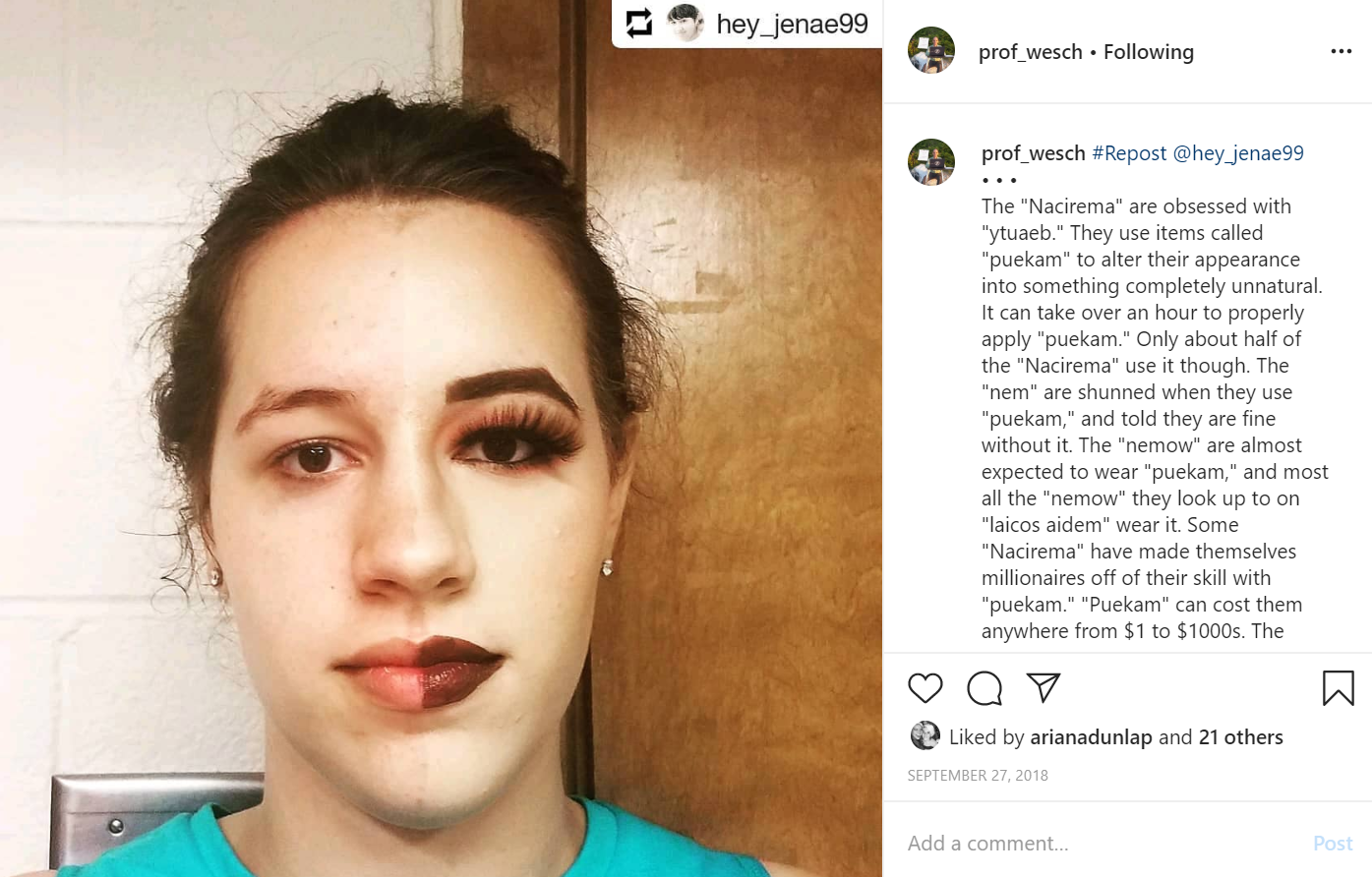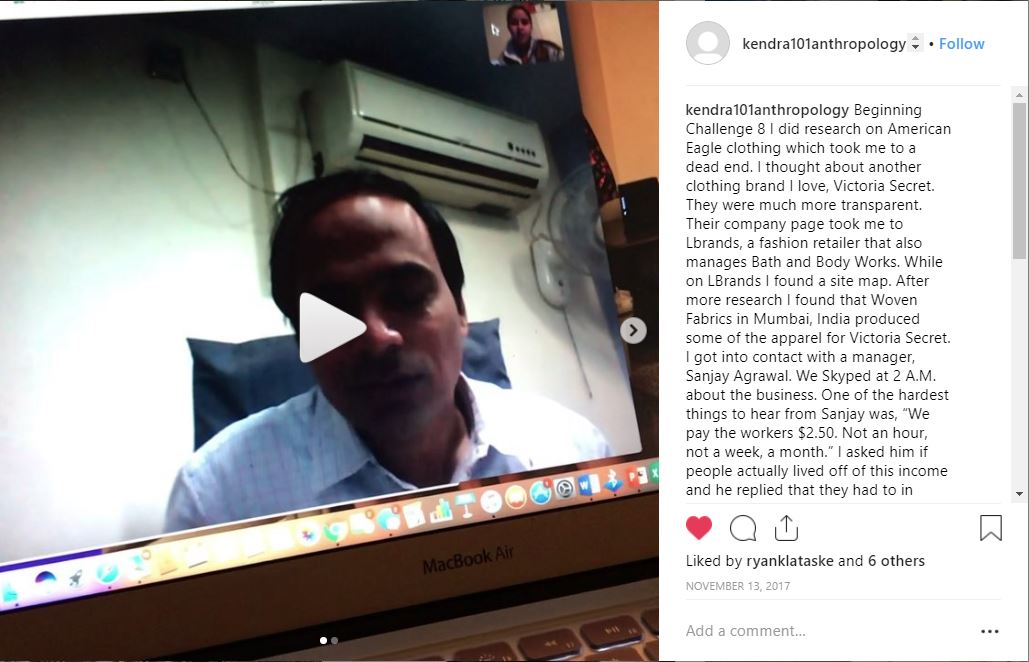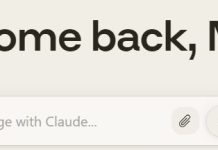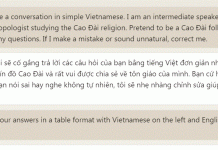On Tuesday I will be leading a AAA webinar with Angela Jenks and Nell Koneczny on assignments we might consider during this covid-19 moment. There are many challenges we are facing, and many goals, including:
- Adapting our old assignments to an online environment
- Adapting ethnographic or other “out in the world” assignments for various levels of “shelter in place” situations
- Engaging with covid-19 phenomena using the tools of anthropology
- Or conversely, providing a space that is decidedly NOT about Covid-19.
I asked the teachers of ANTH101 materials to come together on a Google Doc to brainstorm how we might adapt the 10 Challenges of ANTH101. Here is a summary of our ideas for each challenge, some of which engage Covid-19 and some that purposefully do not. Feel free to adopt, adapt, and borrow any of the challenges for your own use.
Starting with Why (Backwards Teaching)
Before thinking about how you might adopt or adapt these challenges, consider the core Why of your class. What do you want your students to learn? How do you want them to change? Who do you want them to become?
My core “why” is that I want to create voracious learners who lean into difference. To find this why I started by looking at each of the 24 lessons I taught in the past, trying to distill the essential why for each lesson. As I did that I found that those why’s were driven by a handful of bigger why’s and that those bigger why’s were ultimately driven by this bigger transformative core “why.” I now have a “Hierarchy of Why’s” that drives my decisions about the class:
Core Why: Create Voracious Learners who Lean into Difference
This can only be achieved through lifelong practice, so I need to instill in students a core practice that will stay with them long after this class is over. As I thought about what voracious learners who lean into difference actually do, I eventually distilled it down to these three things:
- Ask Questions
- Make Connections (to people and to ideas)
- Try New Things
I also want to give them thinking tools to help them lean into difference, and I want these tools to be memorable and easy to call upon when needed, so I distilled the anthropological perspective into 4 basic elements
- See our own seeing (see past our own assumptions and biases)
- See big (the larger cultural, social, economic, historical and political forces)
- See small (the little details that make a difference)
- See it all (see cultural dynamics and the interactions of the big and the small)
And finally, to keep them motivated they need to see a goal worth attaining. So why does it matter if we learn voraciously and lean into difference?
Core Goal: Experience More. Experience Difference. Experience Differently.
Collectively, these practices, thinking tools, and goals allow us to build better relationships with others, manage complex problems, be more engaged and empathic global citizens, and not least importantly, to enjoy life.
The Challenges
These are the ideas that frame and inspire the following challenges, which were co-created with my colleague Ryan Klataske, who has been masterfully teaching this course online for 7 years (see this excellent video of Ryan sharing his ideas).
Each challenge:
- Allows students to practice the ideas above, and work toward the core goal.
- Requires a photo or video post, adding a sense of “social presence” in the class.
- Is designed to be inherently challenging and fun, tapping into intrinsic motivation
All of these work especially well when paired with chapters from The Art of Being Human, a free textbook-replacement for Intro courses.
Challenge 1: Talking to Strangers (micro-ethnography)
Original Instructions: Your first challenge is to go out into the world and meet a stranger, hear their story, and ask if you can share it. Step outside your comfort zone and try to meet someone different from you – of a different age, background, or walk of life. On Instagram, post a portrait and a short excerpt from what you learned about them that you think best represents this moment for them. Use hashtags #anth101 #anth101challenge1 #yourgrouptag Your post should not be a story about how you met, but instead a very short quote, story, or glimpse into their life at this moment.

Note on Instagram Use: The primary advantage of using Instagram is that it is super-easy for students to post their assignments using their mobile device, and using a unique group hashtag allows you to see them all in one place right from your phone. However, not all faculty or students want to use Instagram for these challenges, and I recommend that if you do use it, provide students a stigma-free pass to not use it. I invite students to simply post their work on Canvas (our LMS) if they do not want to post anything publicly. You can also create a discussion group on your LMS where they can post to share with their classmates. It is a bit more challenging from a mobile device (and may be impossible depending on your LMS) but it does maintain a more familiar “closed class” feel. You can also have them use Canva, PicCollage (for Android or iOS), or Google Slides and send you their work if you do not use an LMS and prefer to keep things private.
Inspired by Humans of New York:
Example: Garrett took a warm, genuine smile and a camera to Wal-Mart. He imagined every one he saw as someone who had a story to tell. This allowed him to see them at their best, and this attitude shined through in his initial interactions which were warm and positive. He found people opening up to him, and posing for beautiful portraits.


The Pedagogical Goal: Students practice engaging with people different from them, and often have to do some self-exploration into what keeps them from engaging with otherness. It also helps them practice an anthropological mindset of asking questions, making connections, and practicing empathy and understanding to bring out a human story in the production of this micro-ethnography. Fits well with discussions of fieldwork, ethnography, and ethics of representation
Adaptation 1: Reaching out to Strangers. Ask students to reach out to ordinary strangers on social media and invite them to an interview over FaceTime.
This is similar to what Brandon Stanton of Humans of New York (inspiration for this challenge) is currently doing, as he notes: “I will still be sharing stories. No matter where you are, around the world, if you have a happy story—send me an email: honybrandon@gmail.com. Maybe something amazing happened to you. Maybe you overcame something that seemed impossible. Maybe somebody changed your life, and you want the world to know about them. Send me a short description of the story, and if chosen, we’ll do a full interview over FaceTime. Humans of New York—Quarantine Edition—is beginning now.”
Adaptation 2: Hyphal Mesh. Students can join and they are auto-matched for a 30 minute deep conversation with a stranger. How it works: “We start in a Zoom as a group. After a brief intro, we join 1-on-1 breakout rooms. In total, we have three 1-on-1s with new people with short group breaks in between.” Thanks to Tom Woodward for finding this.
TIP: Let students decide how “strange” they are willing to go with this. Just talking to someone “less familiar” may be a significant and meaningful challenge for some of them. (Thanks for the tip, Jennifer Ramsey)
Challenge 2: Fieldwork of the Familiar
Original Instructions: Your challenge is to do mini-fieldwork in your own culture, find the strange in the familiar, and produce a compelling photo essay with 4 or 5 pictures that illustrate your insights. In doing so, you will transform some seemingly ordinary feature of your life into something that you recognize as contingent and open to new questions. Pedagogical Goal: Help them use the “art of seeing” to “see big” and “see small” and to recognize the contingency of their own beliefs, ideas ideals, values and institutions. Fits well with discussions of cultural analysis, basic anthropological theory, the anthropological perspective, and ethics of representation
Pedagogical Goal: Help them use the “art of seeing” to “see big” and “see small” and to recognize the contingency of their own beliefs, ideas ideals, values and institutions. Fits well with discussions of cultural analysis, basic anthropological theory, the anthropological perspective, and ethics of representation
Adaptation: Keep as is. Let students decide if they want to use this to explore Covid-19 or if they would rather do something unrelated. There are plenty of photo essays to be done around the house using basic material culture to make a point.
Challenge 3: The 28 Day Challenge
Original Instructions: Your challenge is to try something new or to break a habit by doing something consistently for 28 days. Post your progress using #anth101 #anth101challenge3
Pedagogical Goal: This challenge pairs nicely with a discussion of human evolution that includes the evolution of habits vs. instincts, mismatch diseases, diseases of captivity, and supernormal stimuli (See Lesson 3 of The Art of Being Human if you want a free reading to assign that covers these topics.)
Adaptation: Keep as is. This is a great assignment while social distancing – a fun way to get motivated, share their progress with others, and set a meaningful goal to distract them from the situation.
Challenge 4: Word-Weaving
Original Instructions: Your challenge is to invent a word, phrase, or metaphor that you think would make the world a better place and then try to spread it among your friends.
Examples: Check out The Dictionary of Obscure Sorrows, by John Koenig. Here is one of his pieces on the word “Morri,” a word he invented for “the desire to capture a fleeting experience. He built the word from “memento” (a small reminder of your own mortality) and “torii,” the traditional Japanese gates that mark the threshold between the profane and the sacred.
Pedagogical Goal: As Neil Postman once quipped, “Word-weavers are world-makers.” The goal is to free our students from the unexamined metaphors and ideologies embedded in their everyday language habits. Pairs well with Metaphors We Live By or anything related to Sapir-Whorf or Daniel Everett’s work as seen in The Grammar of Happiness.
Adaptation: Keep as is. If students want to engage more deeply with Covid-19 they could look at different ways of framing the situation and the choice of words by different media outlets, political parties, agencies, etc.
Challenge 5: The UnThing Experiment
Original Instructions: Your challenge is to give something up (a key technology such as social media, electricity, chairs, shoes, cars, the internet) to discover something new.
Pedagogical Goal: Help students see the entanglements and impacts of different technologies on our lives, bodies, infrastructure, economy, social structure, family dynamics, values, ideas, etc.
Adaptations: Many students have been forced to give things up (like classrooms, shopping malls, sporting events, social gatherings, etc.), and may find themselves more addicted than ever to various technologies. They may want to try giving up a rising addiction, or they might just want to reflect on how COVID-19 has itself already removed certain elements of our culture and reflect on the wider ranging impacts of those changes.
Students who want to lean into CV-19 might consider brainstorming: How would our infrastructure, social structure, and ideals and values need to adapt if we have to live with Coronavirus forever?
Challenge 6: Get Uncomfortable (Mini-Ethnography)
Original Instructions: Your challenge is to do at least one hour of fieldwork, immersing yourself in a cross-cultural or sub-cultural experience – a place, event, or activity that makes you uncomfortable (or is at least something new and different from something you would usually do). Do “fieldwork” and write up a “thick description” of your experience.
Examples: Students traditionally do something out in the world. Atheists go to church. Christians go to Buddhist retreats or Muslim prayer gatherings. They go to music festivals of music they are not into, etc. I give them the example of me going to a country bar with my sister:
Pedagogical Goal: This challenge is designed for students to practice the anthropological perspective and key tools such as communication, empathy, and thoughtfulness to really experience and appreciate the world from a different cultural position. Pairs well with discussions of race, gender, identity, ethnography, fieldwork, and the ethics of representation.
Adaptation 1: Social distancing will make an out in the world version of this difficult, but there are online options, as Ryan Klataske has suggested. For example, if someone has never been a gamer, they could try immersing themselves in the social world of an MMORPG. Or they could immerse themselves in any one of the many subcultures of the internet. TA Desiree suggests that students could explore a popular platform like TikTok if they have never understood its appeal and try to dive into it as a space for doing some mini-fieldwork.
Adaptation 2: Students can practice ethnographic observation by carefully watching a TV show as Jennifer Cook did with Downton Abbey. TA Desiree adds that students could explore TV shows and movies with a cult following “like the Rocky Horror Picture Show (and all of the traditions surrounding that, like midnight showings, cosplay, etc), Harry Potter, Hedwig, or TV shows like Dr. Who. They could watch the shows and read the fanfic and research the conventions and things that happen because of the shows. Why do people connect so strongly to these works? What is their cultural impact? You could do the same for books, or even bands that have a huge cultural impact/following, like the Grateful Dead. They can “immerse” themselves in these medias by using their quarantine time to watch/listen, then research the cultural impact/fanbase.
Adaptation 3: A crowd-sourced document initiated by Deborah Lupton includes dozens of ideas for continuing fieldwork during a pandemic. Many of them could be adopted and adapted into an assignment.
Challenge 7: The Other Encounter
Original Instructions: Your challenge is to understand and empathize with somebody as different from you as possible, preferably with differences that are especially difficult for you to understand.
Step 1: Find an other. This may be someone in your class or someone you know or meet outside of class, but they should have beliefs, ideas, or ideals that you find very difficult or even impossible to understand.
Step 2: Big Talk. Set aside at least one hour to have a very deep conversation with them. Use some of these questions to get you started.
Step 3: Reflect on all you have learned about who they are and who they are becoming, where they have been and where they are going, what they have done and what they will do, who they have touched and who they will touch.

Pedagogical Goal: To practice leaning into difference and using the anthropological perspective of “seeing big” and “seeing small” to see how larger forces might have contributed to their differences, and also see the little things that humanize us and allow a space for empathy and understanding. Pairs well with Lesson 7 on different moral foundations and our application of Bourdieu’s ideas about Taste & Distinction.
Adaptations: Students can find an “other” in the class through online means and then Zoom with them. To find their other, you could set up a discussion forum where students simply request a specific other. For example, someone might say, “I am a devout Christian and I would like to meet an atheist,” or they can share some of their stances on politics, religion, and other topics.
TA Desiree suggests that students could be paired with people in retirement communities and long-term care facilities, to explore and bridge the generation gap.
Another option would be to ask students to post one of their core ideals to https://www.reddit.com/r/changemyview/ and engage in the resulting discussion with open communication, empathy, and thoughtfulness.
Challenge 8: Global Connections
Original Instructions: Your challenge is to connect with someone from a foreign country, preferably somebody with a very different cultural and socio-economic background from yourself.
Option 1: Find someone from a foreign country who actually helped create something that you own. (Tips here)
Option 2: Connect with an international student using the questions from Challenge 7. Contact your local international student office to find somebody.
Option 3: Connect with anyone from a foreign country using questions from Challenge 7.

Pedagogical Goal: Broaden their understanding of cultural differences, global connections, and how the world works to bring about prosperity as well as poverty and inequality. If doing option 1, this project demonstrates how connected they are to others around the world, and how many of these connections are hidden from view and difficult to trace. Pairs well with discussions of globalization, structural power, and structural violence.
Adaptation 1: This is still possible to do entirely online. Your local international student office could be very helpful for pairing students, and it will likely be very welcomed and well-received by them. Alternatively students can try to find someone in another country via social media.
Students could stick to the original plan of using these questions, or they could talk about how the Covid-19 situation looks and is experienced in a different part of the world.
Adaptation 2: Students could reflect on the global connections exposed by COVID-19, both in terms of the spread of the virus, as well as the economic impact that shut downs in one country or one industry have had on other countries and industries.
Challenge 9 asks students to reflect on all that they have learned in this class and invites them to re-write your own story, revise their story of the world, or analyze and reflect on their values and how they have been strengthened or change throughout the course.
Challenge 10 then asks them to look forward and think about how the lessons of the course might be useful for them in their future.
Both Challenge 9 and 10 are useful ending notes for the semester, even in (or especially in) a time like this.
Assessment Options
The Inherent Dangers of Assessment:
These challenges were designed in part to counter some of the common negative tendencies of assessment, which include:
- Learning is confined to the outcomes defined by the professor
- Students work toward the narrowest interpretation of these outcomes
- Students engage in “Strategic Learning” (getting the grade, beating the system) rather than “Deep Learning” (authentic growth)
To counter these tendencies, we have tried to make each challenge inherently interesting and valuable to students. We monitor the effectiveness of the challenge not just in terms of the quality of products students produce, but their enthusiasm for engaging deeply with the challenge and how often we find them doing extra challenges or inviting their friends who are not in the class to do them.
There are some key features of these challenges that make them different, and require different assessments than standard papers and projects:
- Each student will face their own unique challenges to complete the challenge, so the specific outcomes cannot be completely pre-defined by the professor.
- Students find inherent value in overcoming their own unique challenges,
- and engage in authentic “deep learning” as they try to overcome them.
As such, the real learning is in the production, and may not be fully reflected in the product. Therefore, we only look at the quality of the final product as one small part of the overall assessment, and are much more interested in assessing whether or not any authentic learning took place.
Done / Re-Do Grading: We usually use Done / Re-Do Grading along with some form of self-assessment or self-reflection. This form of grading is easy to administer and can usually be done by a TA or even a peer if you are doing peer assessment. The grader is simply looking for evidence that the assignment was engaged authentically, that some challenge was encountered, that the student has learned something from the challenge, and that there are no serious conceptual mis-understandings that need to be corrected and practiced again. I usually enter a 100% for “Done” and a max of 70% for “Re-Do” and invite the student to re-do the assignment sometime in the next 2 weeks to receive an A (90%).
Self-Assessment: I strongly encourage some form of self-assessment for these. While there is some inherent self-reflection that is unavoidable while undertaking the challenge, it is not necessarily brought to consciousness and explored. A short required self-assessment can do this.
Consider a 2-part submission, in which students first post their product to Instagram, an LMS discussion group, or simply e-mail to you (depending on your preferences for how public you want these to be), and then have them submit a second private reflection to you that addresses the following questions:
- What core ideas, concepts, or skills did you explore or implement in this challenge?
- How did it go? What challenges did you face?
- What did you learn from those challenges?
- Are there any ideas, concepts, or skills you are still struggling to understand that you would like to discuss?
Consider all of the above as starting places where you can build your own ideas, and if you come up with an interesting variation, or have anything else that might be useful to those of us teaching Intro courses, please share below.
Join our Google Group for a full 65 page guide on implementing ANTH101 resources in your course, including full weekly discussion and workshop guides.
Thanks!



